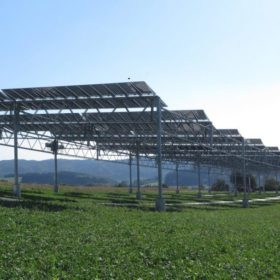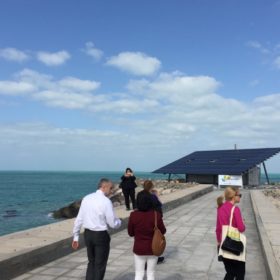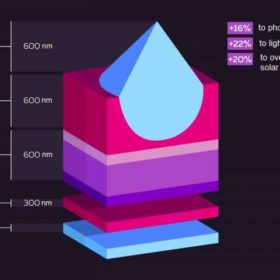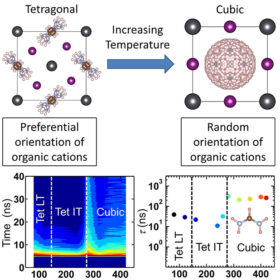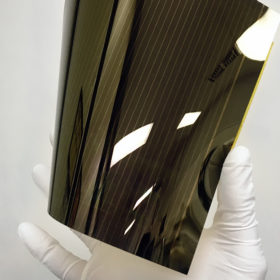Tin makes nanoparticles better at absorbing sun’s rays, researchers find
Addition of tin in germanium nanoparticles helps to improve their photoluminescence thanks to better matching of lattice structures that boost structural characteristics, aiding light absorption, says Ames Laboratory in U.S.
NASA develops new tool to measure total solar irradiance
NASA is on course to more accurately monitor the level of solar irradiance that reaches the earth, with the launch of a instrument for the International Space Station.
PV increases efficiency of cultivatable land use by more than 60%, Fraunhofer ISE says
Until now, cultivatable land was destined either for the generation of energy, or for food production. However, a pilot project, run by the Fraunhofer ISE, shows the two are compatible.
California researchers observe perovskite degradation at nano-scale
A group of researchers led by the University of California San Diego (UCSD) has utilized a novel technique to delve deep into hybrid perovskite materials without damaging. The team was able to observe ion migrations within material, which reduced its efficiency as a solar cell material.
French forces unite to develop solar PV desalination plants
Two French companies have partnered to develop projects that combine renewable energy generation with water desalination. This is an area the solar sector is targeting specifically for the developing world, due to its off-grid compatibility.
DNV GL: AI will make renewables more efficient
A paper published by consultancy DNV GL forecasts major growth in the use of artificial intelligence (AI) applications within renewable energy, and outlines the risks and opportunities of such technologies.
New coating steps up solar cell efficiency by 20%, Russian researchers find
By putting silica particles inside the top electrode, scientists from Russia’s ITMO University have developed a new solar cell coating, which helps avoid overheating and diminishes light reflection, thus increasing overall efficiency by 20%.
Rotating molecule discovery could bring higher efficiencies to perovskite PV
A team of researchers led by the University of Virginia in the USA has discovered that rotating molecules within a solar are one of the key mechanisms behind the high levels of conversion efficiency seen in perovskite solar cells. The discovery could allow scientists to select and design new materials capable of even more efficient PV generation.
Solliance hits new perovskite milestone
European research group Solliance has announced new conversion efficiencies of 13.5% (cell) and 12.2% (module) for its perovskite based PV technology. The group states that the records were achieved in a factory setting, using an industrially scalable roll to roll process.
UCI scientists develop new type of solar generation
A team of researchers from University of California, Irvine (UCI) has developed a device which which converts sunlight into electricity through the motion of ions, rather than through excitement of electrons as in standard photovoltaics.


